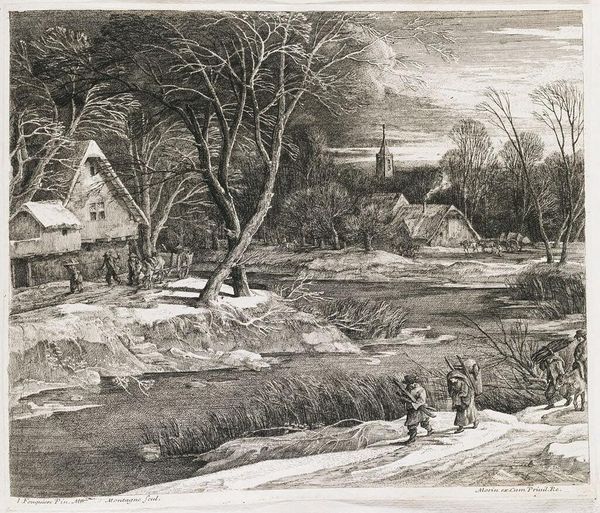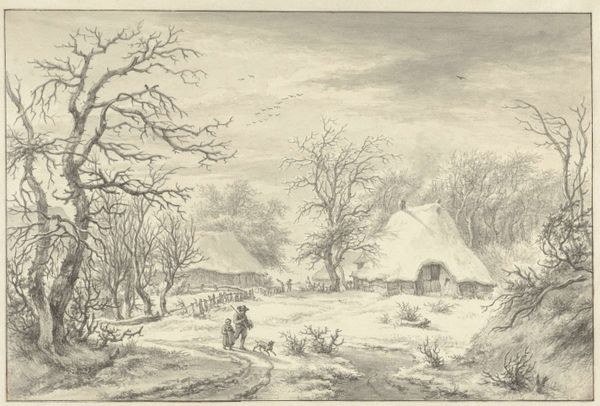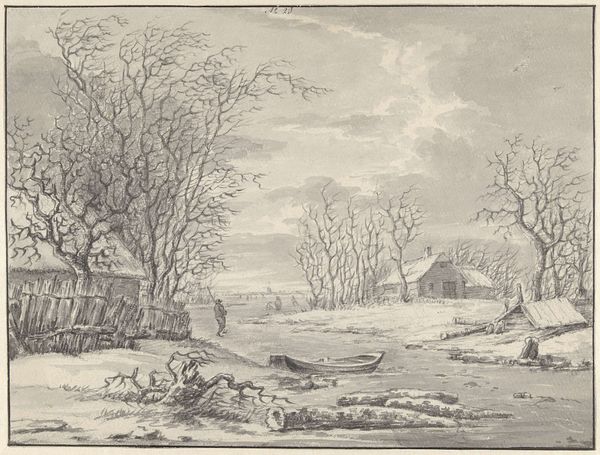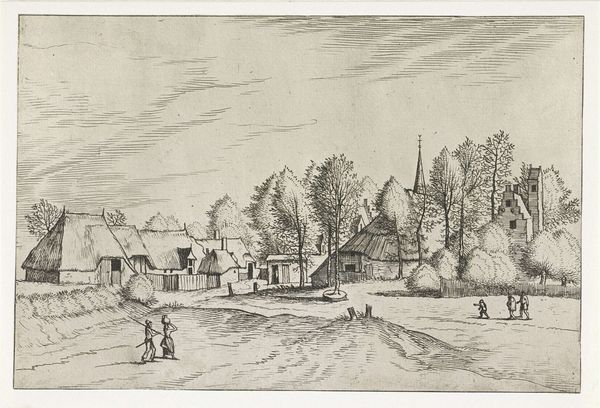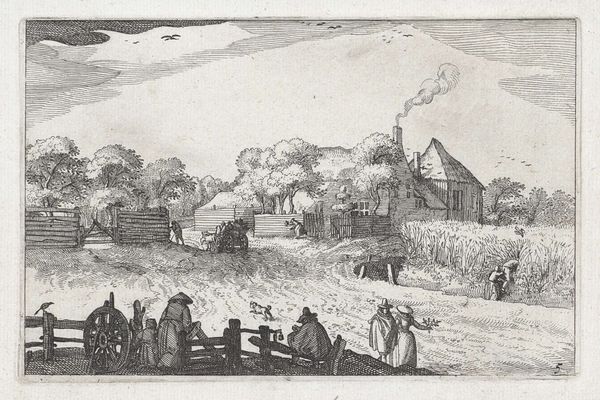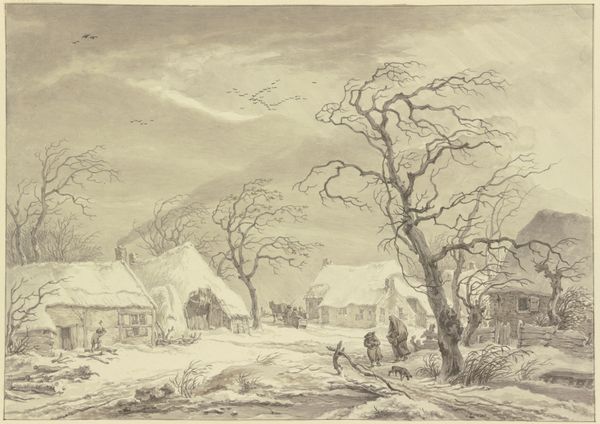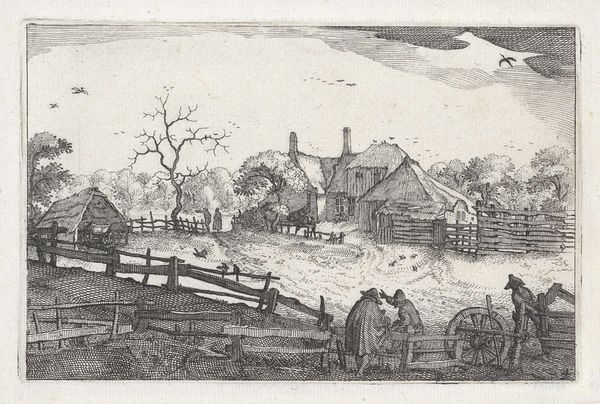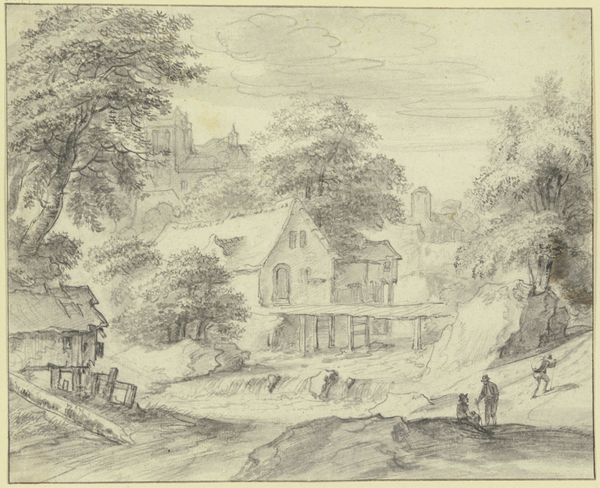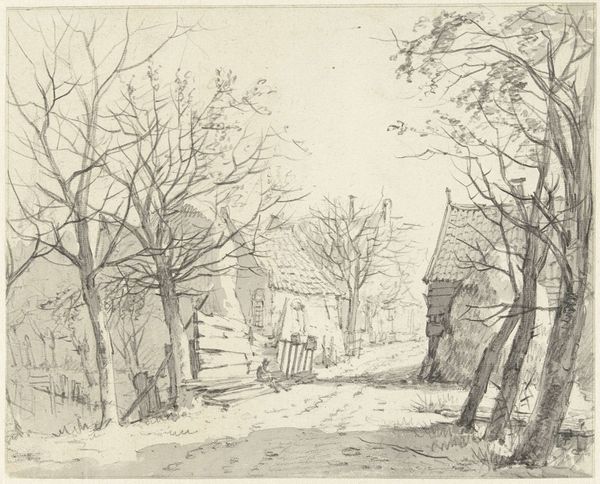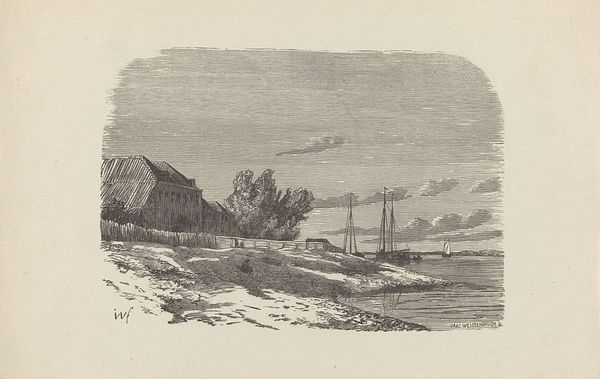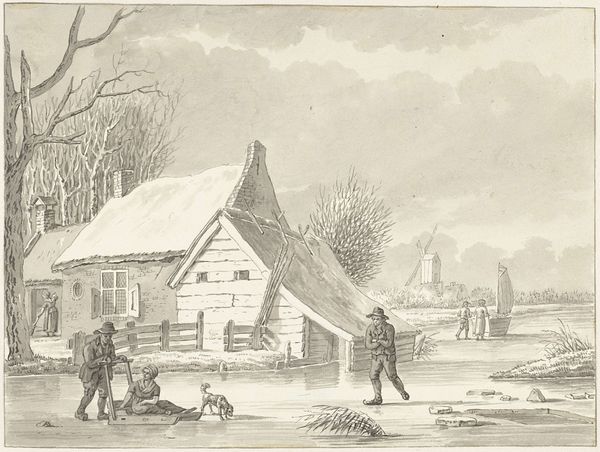
print, etching, engraving
#
baroque
#
dutch-golden-age
# print
#
etching
#
landscape
#
cityscape
#
genre-painting
#
engraving
Dimensions: height 263 mm, width 308 mm
Copyright: Rijks Museum: Open Domain
Curator: Before us we have "Winter Landscape with a Village View" by Matthieu van Plattenberg. It's difficult to nail down an exact date, but it was created sometime between 1617 and 1660, falling squarely into the Dutch Golden Age. The artist worked primarily with printmaking techniques; this is an etching, with some engraving as well. Editor: It’s a chilly scene. I can practically feel the damp air radiating from that water and see the shivers of folks moving about. What’s most impressive is how much detail he wrings out of a rather limited palette using engraving—you can really get into the tactile sense of that labor. Curator: Precisely! Plattenberg was part of a larger movement popularizing genre scenes and landscapes. His works offered glimpses into everyday life. They found a ready audience eager to see the mundane elevated into the realm of art. The burgeoning middle class also enjoyed identifying themselves and their villages within these images. Editor: The depiction of labor and ordinary tasks is critical to the work’s success. We observe figures seemingly weighed down not only by their loads, but also perhaps by the burden of winter itself. It speaks volumes about the daily lives of ordinary folks and what they made. It makes me consider the role of artistic creation. Curator: Good point! This was also the age of expanding print culture. These types of images circulated widely, helping shape ideas of Dutch identity and showcasing the prosperity and perceived normalcy of the Republic despite constant political and military tensions. Editor: Did the ready availability of prints contribute to the accessibility of this new national image? Because in addition to the labor we are looking at in the foreground of the composition, there’s also the labor required to reproduce it. Curator: Absolutely. The very process of creating and disseminating such images was becoming increasingly industrialized and contributing to this self-awareness, if that makes sense. Editor: Very much so. Considering Plattenberg’s deft hand in etching, what may initially appear to be merely a depiction of landscape becomes so much richer once we consider it from the view of a new, industrious viewership. Curator: This has broadened my perspective; the role of prints in crafting a shared cultural consciousness during the Dutch Golden Age, the way an artist mediates and frames national identity… it is significant. Editor: Right, and I now see a new angle on Plattenberg's skill through our discussion of material conditions, reminding us of the ingenuity behind art accessible to more than just the wealthy few.
Comments
No comments
Be the first to comment and join the conversation on the ultimate creative platform.
